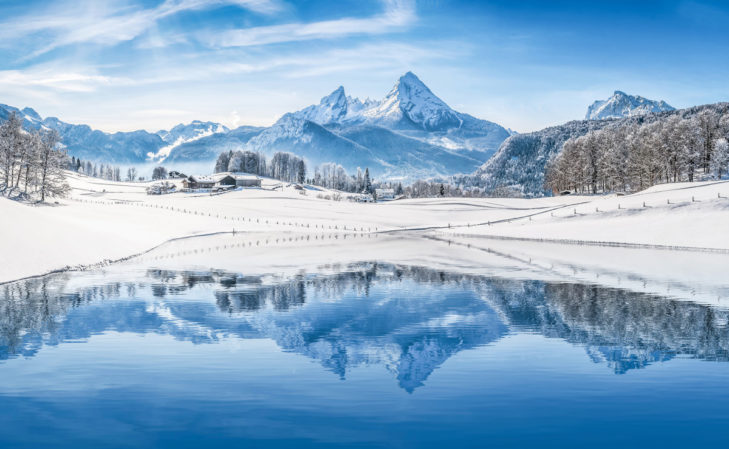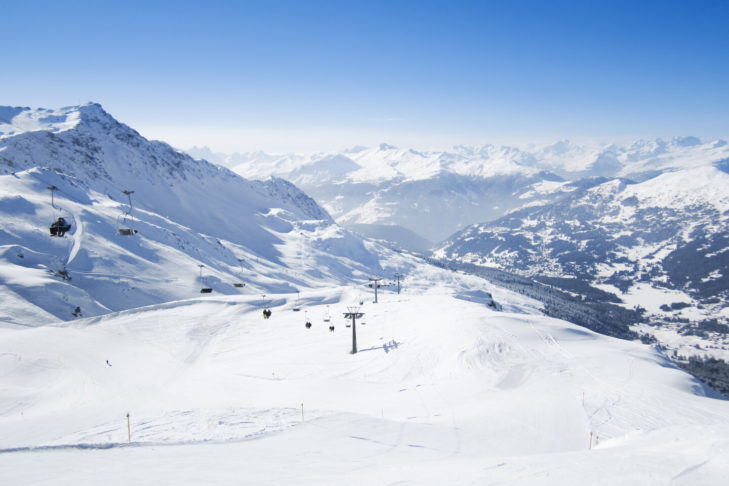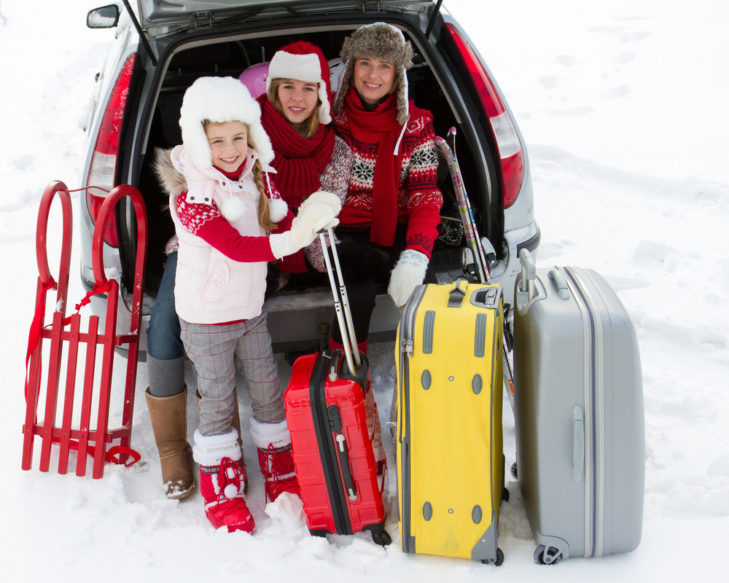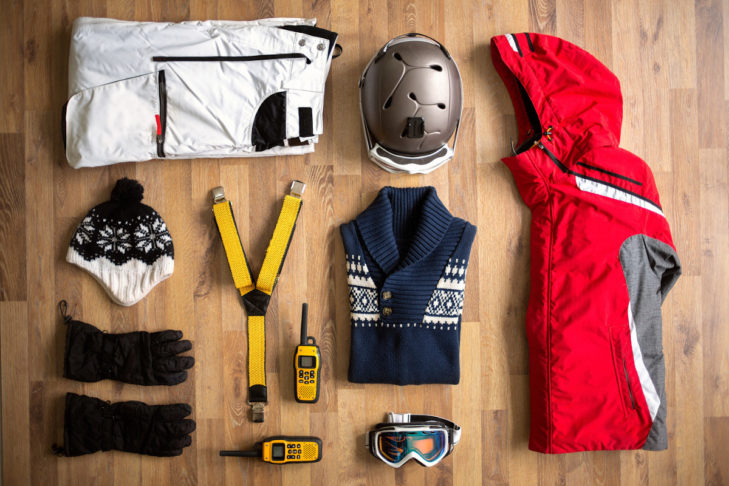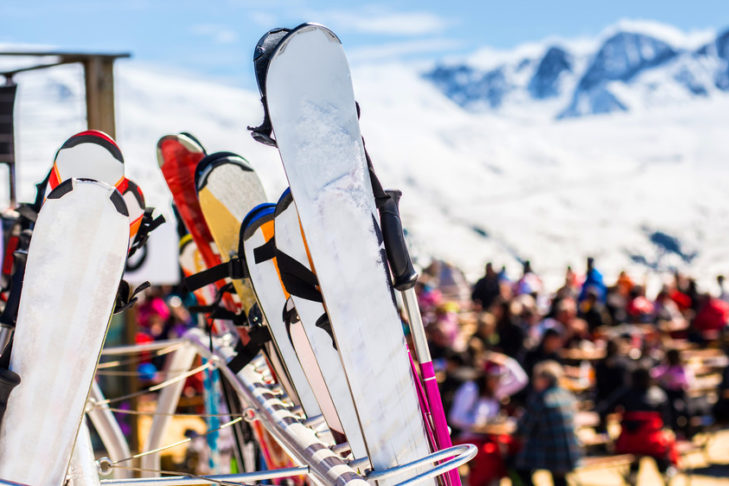In times of climate change, many winter sports fans are concerned about eco-friendly ski holidays. But what should you look out for? SnowTrex has a few tips and tricks to help make a ski holiday environmentally friendly and sustainable.
Eco-friendly destination
Where does one travel to spend an environmentally friendly ski holiday? This is a question primarily for winter enthusiasts who already prioritise sustainability and environmental protection in their everyday lives and want to maintain these values during their ski holiday. For this reason, and because many ski areas also want to fight climate change on their own initiative, measures such as stopping the expansion of pistes and lifts or the exclusive use of green electricity for lifts and snow cannons are becoming increasingly popular. Other measures that are being implemented more and more in ski areas and regions include “snow farming” – the reduction or abandonment of artificial snow, including snow cannons – and the restructuring into car-free ski resorts.
In order not to categorically exclude any ski area that does not implement all of these measures when booking a winter trip, winter fans should follow the advice of always looking for the best ski area for themselves and their fellow travellers. For example, if you are travelling with your family or are still a beginner, a small or medium-sized ski area that does not focus on the development of new pistes, such as the Berchtesgarden Region ski area, may be sufficient.
If you do want a larger ski area, you can choose a ski area like the Arosa Lenzerheide ski area or the Tignes-Val d’Isère ski area. Although these are large with 225 and 300 kilometres of slopes, they artificially snow only up to 60 per cent of their slopes, which saves energy and water.
Eco-friendly ski accommodation
The type of ski accommodation also plays a decisive role in an environmentally friendly ski holiday. For this reason, more and more accommodations are focusing on sustainability and are trying to become more environmentally friendly with a wide variety of measures, such as switching to a sustainable electricity producer. Using only local, organic food, for example, can also reduce CO2 emissions during transport and support the regional economy.
“Eco-accommodations” are therefore perfect for combining a sustainable lifestyle with a relaxing holiday. Snow fans can usually recognise them by a certificate or seal that points to energy and water savings, resource conservation and/or waste avoidance. There are several of these, such as the German Viabono certificate, the Steinbock label from Switzerland or the Austrian Eco-label, which make it easy to pay attention to sustainability when choosing an accommodation.
We have already picked out our best eco-accommodations for you!
Eco-friendly journey
As soon as winter fans have decided on a place, it’s time to plan the journey, and here, too, are many aspects that can make a ski holiday more sustainable if they are taken into account. On the often long journeys to and from the resort by car, a lot of CO2 is emitted, which is known to do more harm than good to the environment. Nevertheless, for most people, it remains the most practical means of transport to reach distant destinations.
To keep the damage as low as possible, there are helpful tips and tricks. For example, holidaymakers can always try to travel with as many passengers as the car can hold, while at the same time making sure they only pack what is really needed. Travelling at times when nerve-racking, fuel-guzzling traffic jams are less likely, as well as doing without roof boxes and the like, are also measures that help keep CO2 emissions as low as possible.
Those who decide to travel by train have already chosen the most sustainable option. There are also many other benefits for winter holidaymakers who travel by train: for example, there is no need to search for a parking space in the resort and no need to install snow chains in the higher regions of the Alps. It is also important to know that you can now sometimes travel directly to the ski resort by train and then take the accommodation’s own shuttle or a public bus to get directly to the accommodation.
Die-hard winter sports fans who can stand being away from the pistes a little longer can perhaps consider visiting the Alps just once or twice instead of several times a winter. This will save them some nerve-racking and environmentally damaging journeys to and from the slopes. To compensate for the “lost” days of skiing, skiers and snowboarders can then stay a few days longer in the resort to fully appreciate the wintery bliss.
Eco-friendly behaviour on the piste
Paying attention to one’s surroundings, and to nature in particular, is a measure that many people already implement in their everyday lives, and that should also come quite easily to most ski fans. After all, it’s easy to make sure that your jacket and trouser pockets are closed on the snow-covered hills. Just like the fact that you have to take another look behind you after short breaks to make sure that packaging from snacks, for example, has not accidentally been left behind in the snowy landscape. Being careful to ski on the pistes and avoid off-piste skiing also helps to not only protect wildlife from stress, but also yourself, other skiers, and nature from snow avalanches, for example.
Sustainable ski clothing and equipment
Ski clothing has to meet many demands. They should keep you warm, be water- and snow-repellent and usually also look good. At the same time, they should neither break quickly nor be expensive. In order to be able to count on all these requirements for their ski clothing, skiers should already pay attention to the quality of the outdoor clothing when buying it. If you also want to protect the environment, you can choose a manufacturer that produces its clothing sustainably, such as from recycled or environmentally friendly materials, for example, or uses sustainable electricity in the production process. Labels and certificates such as those of the Fair Wear Foundation, the bluesign seal, the addition “PFC-free” and many other indications that identify environmentally and socially responsible products can be helpful. If something should break in the course of time, you don’t have to buy a new one. Often, a needle and thread are enough to mend many things.
Giving away old ski clothes also contributes to more sustainable skiing. Children in particular can only wear their ski clothes for one to two years until they have outgrown them again, so it makes sense to pass the clothes on to younger siblings, relatives or friends after this time who can then continue to enjoy them.
When buying their own ski equipment, there are also some aspects that winter sports fans can consider in order to make skiing more sustainable: before buying their own equipment, skiers and snowboarders should always consider whether it is worth owning all the equipment or whether it is sufficient to simply rent it locally. For winter sports fans who only hit the slopes once a year in particular, sharing the necessary equipment with other winter sports fans can have many advantages, for example in terms of both transport and costs. In addition, one’s own ski equipment also gets older as time goes on, which isn’t a problem if you rent your ski equipment.
If it does have to be your own equipment, skiers and snowboarders should make sure when buying that it has been produced under fair conditions and without toxic chemicals. These days there exist ski and snowboard manufacturers such as Dynafit, Nordica, Nitro and Burton who are placing more and more emphasis on the sustainable production of their products. When caring for skis and snowboards, you can also make sure that you use petroleum-free wax products or organic waxes.
And when at long last the sun has set on your own faithful piste companions, there are various ways to let them live on or give them a new purpose.
FAQ’s on eco-friendly ski holidays
What is an eco-holiday?
Eco-ski-holidays differ from normal ski holidays in that there is a conscious focus on the environment. During the trip, efforts are made to ensure that the natural balance is affected as little as possible. The choice of accommodation is usually the most important aspect of eco-ski-holidays, as this is the best place to focus on sustainable behaviour.
How can I recognise environmentally friendly ski areas?
In general, there is no certificate or seal that marks climate-friendly ski areas. However, ski areas often provide information on their websites about the climate protection measures they have implemented. In addition, there are also cooperations between ski areas, such as the “Alpine Pearls”, in which the participating ski areas jointly commit to gentle and climate-friendly tourism with various measures.
Does sustainable skiwear always have to be new?
The simple answer here is: “No!” As clothing, especially ski clothing, should be worn as long and often as possible, it is even better for the environment to buy it second-hand. You can easily find items at flea markets or online shops that resell clothes in various conditions at a reasonable price.


